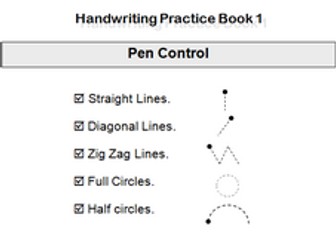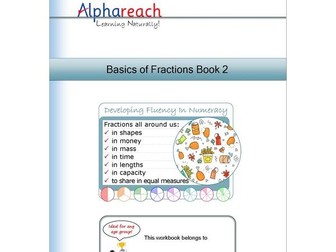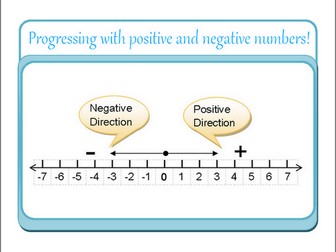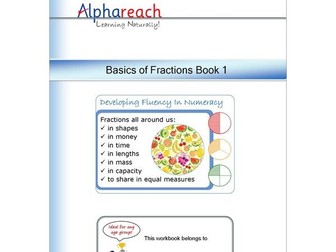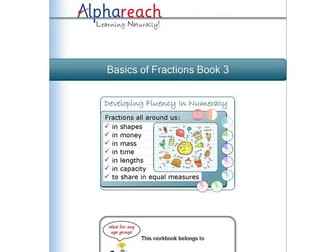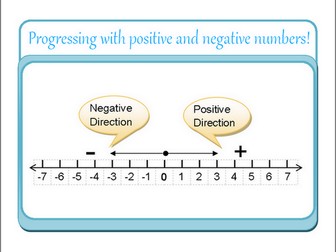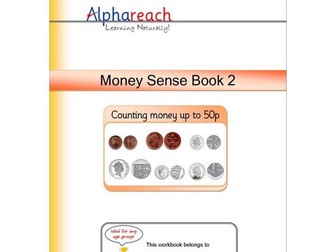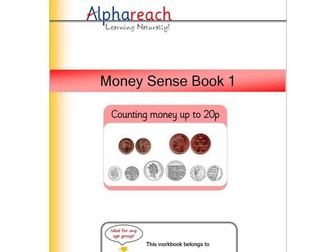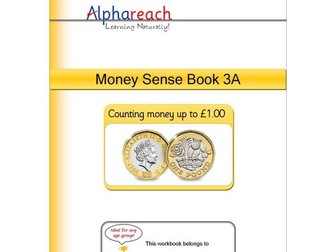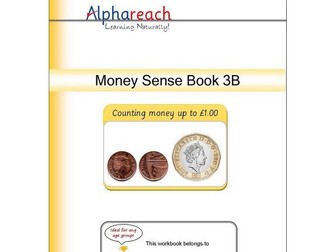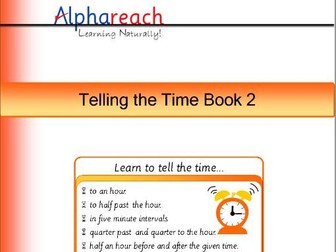Handwriting book Pencil Control.
Pencil Control.<br />
This is the first book in the Handwriting series. It is ideally suitable for reception year children ages 3-5 years and can also be used for older or special needs children who lack pencil control. <br />
This book will introduce your child to draw straight lines and curved lines. It is designed to assist children to form letters and numbers. <br />
This exercise also supports hand to eye co-ordination.<br />
Guidance for printing. <br />
Print on A4 in Landscape. 20 pages of activity which can be reprinted again and again. <br />
Content Description:<br />
1 Straight lines.<br />
2. Diagonal lines.<br />
3. Curves.<br />
4. Zigzags.<br />
5. Mix straight and curves.<br />
6. Circles.
Adding and Subtracting numbers to 20
UK: Key Stage 1. <br />
US: Grade 1 and 2<br />
Practice worksheet. Single digit addition and subtraction sums<br />
Each Practice sheet contains 25 sums.<br />
There are five practice sheets of addition sums up to 20 with answers.<br />
There are ten practice sheets of subtractions sums from 20 with answer.<br />
.
Food Miles Calculator
<p>Help students learn about how far the food they eat travels and calculate its carbon footprint. Suitable for use in any subject & various year groups.<br />
Most countries nowadays import nearly half the food we consume as trade between countries has increased in the past few decades.<br />
We all have an idea that the longer the distance the food travels the higher the carbon footprint but is this always the case?<br />
Use our food miles calculator to explore this and many other facts. <em>Let your curiosity ignite and be creative!</em><br />
<strong>Click on the link to access the calculator.</strong><br />
<a href="http://" target="_blank" rel="nofollow">https://alphareach.com/student-resources/sustainable-and-balanced-living/food-miles-calculator/</a></p>
Pages from the Basics of Fractions Book 2
<p>This workbook is ideally suitable for pupils in years 3, 4 or 5<br />
There are two sample worksheets from the workbook Basics of Fractions Book 2.<br />
The worksheets enables pupils to calculate and colour fraction of a quantity and fractions in a shape. Pupils have an opportunity to understand that a unit fraction is just another form of division.<br />
Pupils can also recall the and write that the top number in a fraction is called a numerator and the bottom number is the denominator.</p>
<p>REQUEST FOR REVIEW<br />
If you find this resource useful please add a comment in the review section. Your feedback is much appreciated and also valuable to other users.</p>
undefined
Pages from the Directed Numbers Book 1
<p>These worksheets are suitable for primary school children classes 4, 5 and 6.<br />
This worksheets includes:</p>
<ul>
<li>Key words associated with negative and positive number line. This is useful, to learn facts about positive and negative numbers.</li>
<li>Real life example with different temperatures in various cities using the map of Europe. It is useful, to teach differences in temperatures between cities. Cross curricula, Map of Europe and showing the capital cities of some countries, creates awareness in pupil of differing temperatures at a given time.</li>
<li>Adding and subtracting positive numbers using the number line.</li>
</ul>
<p>REQUEST FOR REVIEW<br />
If you find this resource useful please add a comment in the review section. Your feedback is much appreciated and also valuable to other users.</p>
Pages from the Basics of Fractions Book 1
<p>This worksheet is ideally suitable for pupils in years 2 , 3 and 4, depending on their ability.<br />
There are two sample worksheets from the workbook Basics of Fractions Book 1.<br />
The worksheets covers:</p>
<ol>
<li>Calculating fractions of half.</li>
<li>Calculating fractions of thirds.</li>
</ol>
<p>REQUEST FOR REVIEW<br />
If you find this resource useful please add a comment in the review section. Your feedback is much appreciated and also valuable to other users.</p>
Name: Days of the week and months
<p><strong>Who it is for?</strong><br />
Pupils age 6 to 8.</p>
<p><strong>What is included and why it is useful?</strong><br />
Names of the months and days of the week with missing vowels.<br />
Words associated with night and day.</p>
<p><strong>Learning objectives</strong><br />
Spellings of days of the week and months of the year.<br />
Recognise vowels.<br />
Recognise words associated with night and day.</p>
<p>**Practical tips on how to use this resource. **<br />
Use the worksheet at hoe or in class at your discretion.</p>
Pages from the Basics of Fractions Book 3
<p>This worksheet is ideally suitable for pupils in years 4, 5 and 6<br />
There are two sample worksheets from the workbook Basics of Fractions Book 3.</p>
<p>Page 1. This worksheet enable pupils to distinguish between unit fractions and proper fractions using examples and diagrams to colour.</p>
<p>Page 2. This page contains a mixture of activities. Pupils mentally calculate fractions of quantities using whole numbers and measurements such as lengths, weights, capacity and time. Pupils explore thirds of semicircle, circle and triangles.</p>
<p>REQUEST FOR REVIEW<br />
If you find this resource useful please add a comment in the review section. Your feedback is much appreciated and also valuable to other users.</p>
Pages From Directed Numbers Book 2
<p>Describe who it’s for?<br />
These worksheets are suitable for classes 4, 5 and 6 from primary school and 7 and 8 from secondary school.</p>
<p>What’s included and why it’s useful?<br />
Addition and Subtraction rules and facts. Multiplication and division rules and facts.<br />
Examples of adding negative and positive numbers using the number line, followed by examples to do without the aid of number line with using the rules.</p>
<p>REQUEST FOR REVIEW<br />
If you find this resource useful please add a comment in the review section. Your feedback is much appreciated and also valuable to other users.</p>
Pages from the Money Sense Book 2
<p>This worksheets is ideally suited for pupils age 5 to 9, depending on the pupils ability.<br />
There are four sample worksheets from the workbook Money Sense Book 2.<br />
The worksheets covers:<br />
This selection of worksheet covers:<br />
Count and write the amount of coins and cross out half. The pupils will experience pictorial representation of halving a given quantity using money.<br />
Draw ten pence and one pence to make up the given value. The pupils will experience the concept of place values using tens and ones.<br />
Exchange five pence with ten pence and exchange ten pence with twenty pence. The pupils will develop an understanding of exchanging coins of different denominations.<br />
Working out cost of buying strawberries and apples. Pupils learn to use multiplication when working out the costs of buying more than one items of the same type.</p>
Pages from the Money Sense Book 1
<p>This worksheets is ideally suited for pupils age 5 to 9, depending on the pupils ability.<br />
There are four sample worksheets from the workbook Money Sense Book 1.<br />
The worksheets covers:<br />
Counting and writing the value of the coins. Adding one pence to a given number of coins. Pupils learn to recognise and know the different denomination of coins.<br />
Counting coins and crossing off 1 pence. This develops pupils subtraction skills.<br />
Exchanging five pence for ten pence. This develops an understanding of exchanging coins.<br />
Adding five pence and ten pence to the given value. This exercise reinforces addition of five and ten to a given number.</p>
<p>REQUEST FOR REVIEW<br />
If you find this resource useful please add a comment in the review section. Your feedback is much appreciated and also valuable to other users.</p>
Pages from the Money Sense Book 3A
<p>This worksheets is ideally suited for pupils age 5 to 9, depending on the pupils ability.<br />
There are three sample worksheets from the workbook Money Sense Book 3A.<br />
The worksheets covers:</p>
<ol>
<li>Draw 50p and 100p in different ways.</li>
<li>Problem solving. Pupils invited to draw coins to buy the apples and getting change from £1.00.</li>
<li>Problem solving. a) Pupils imagine they have 25 pence and are invited to workout how much more money they would need to save to make up a given amount of money. b) Pupils are also expected to share a given amount of money between two and three friends.</li>
</ol>
<p>These worksheets provides an opportunity for the teacher or TA to explore further using different amounts of money.</p>
<p>REQUEST FOR REVIEW<br />
If you find this resource useful please add a comment in the review section. Your feedback is much appreciated and also valuable to other users.</p>
2D Shapes - Explore round shapes
<p>**Who it’s for? **<br />
Pupils in key stge 2 and 3</p>
<p><strong>What’s included and why it’s useful?</strong><br />
Circles, semicircles, ovals, diameter and coordinates.</p>
<p><strong>Learning objectives</strong><br />
Explore properties of round shapes.<br />
Reasoning with areas<br />
Locate shapes using coordinates<br />
Explore the diameter and the length of round shapes placed end to end.</p>
<p><strong>Practical tips on how to use your resource.</strong><br />
Use this worksheet in class, set homework or use it as an extension/SEN.</p>
Pages from the Money Sense Book 3B
<p>This worksheets is ideally suited for pupils age 5 to 9, depending on the pupils ability.<br />
There are two sample worksheets from the workbook Money Sense Book 3B.<br />
The worksheets covers:<br />
Page 1. Problem solving. This resource works on multiple levels. Pupils workout the cost of buying six small rulers and four big rulers from 60 pence using divisions and then drawing sixty pence in two different ways. The pupils are also instructed to use a ruler to measure various items in cm and mm.<br />
Page 2. Drawing coins. Draw coins of a given amount of money using only 10p and 1p; this exercise will get the pupil to think of place values. Draw half of the given amount of money; this exercise will get the pupil to think of dividing by two. Use the same type of coins to make £1.00 and then cross off three coins; this exercise will get the pupil to think of subtraction.</p>
Using five times table to tell the time
<p><strong>Who it’s for</strong><br />
Suitable for ages 6 to 9</p>
<p><strong>What’s included and why it’s useful.</strong><br />
Telling the time in five minutes interval and the five times table</p>
<p><strong>Learning objectives</strong><br />
Recognise the use of five times table in calculating time</p>
<p>**Practical tips on how to use this resource **</p>
<p>You can use it in class, one to one or use this resource to set homework.</p>
